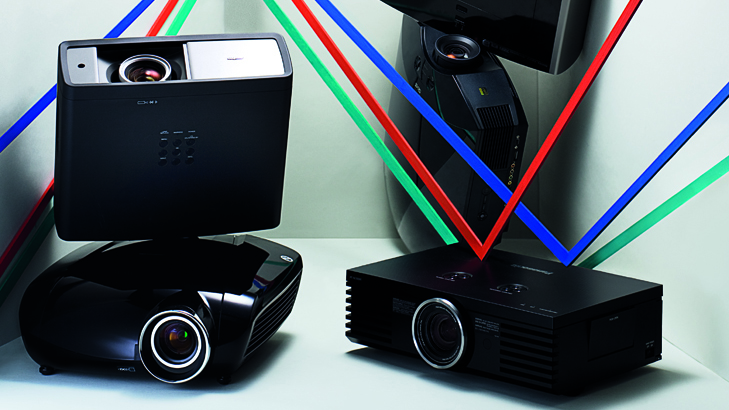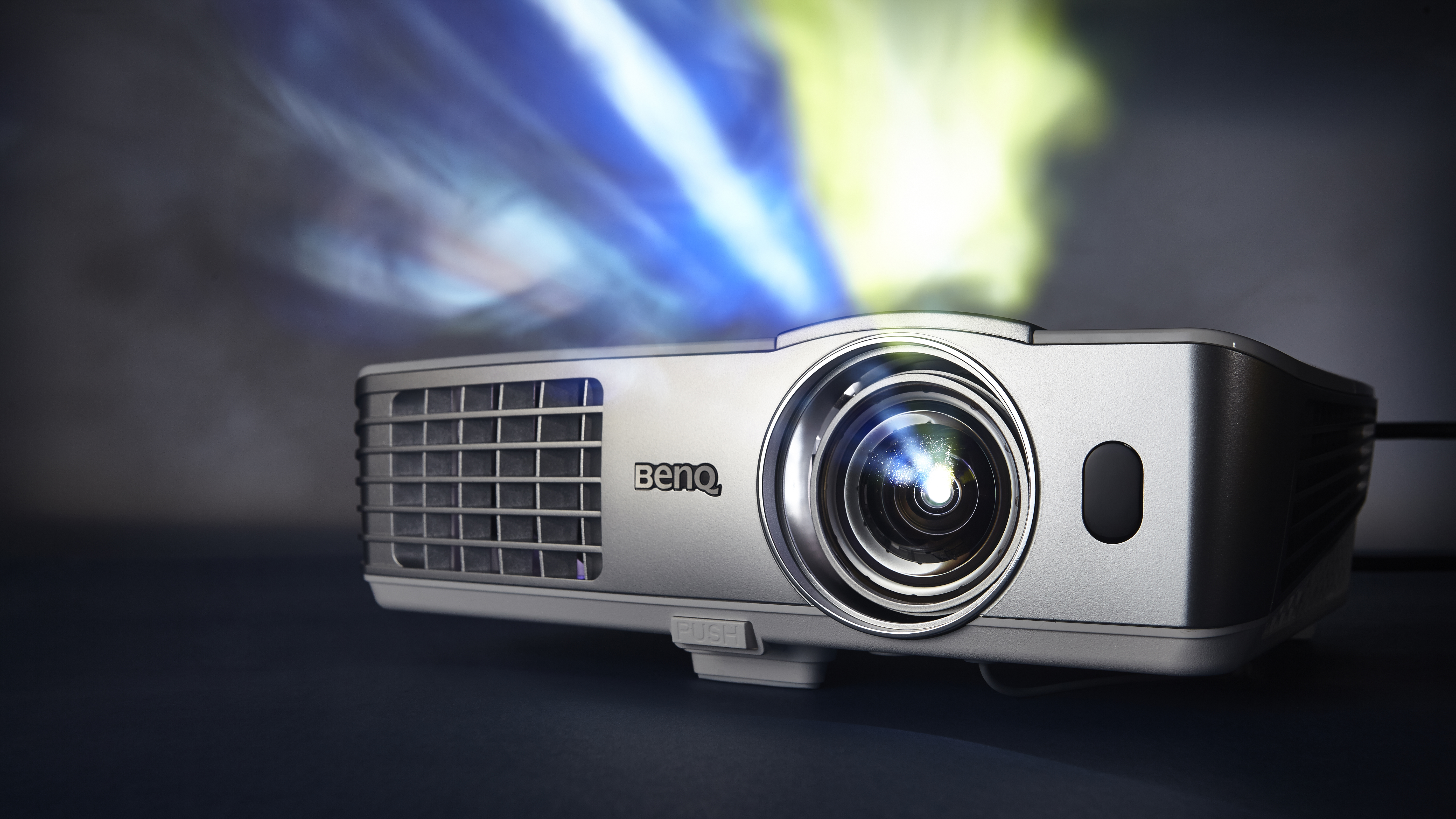Gaming on a projector: the pros and cons of big-screen gaming
Go big or go home

There was a time when a projector was the only possible way of gaming on a decently-sized screen in your living room, but nowadays it’s not uncommon to find televisions themselves sized in excess of 77 inches.
Projectors still might have the edge in terms of maximum possible screen size, but for most reasonably sized living rooms you shouldn't have much trouble finding a television big enough for your needs.
However, the humble projector is still far from redundant for gamers today, and actually possesses a number of key advantages over big-screen televisions that makes it an investment that’s worth looking into.
We’ve been trying out BenQ’s gaming-focussed W1210ST projector to work out the best and the worst things about using them for gaming, so without further ado here are the top four reasons to consider gaming on a projector, along with the top four reasons you might want to give it a miss.
It won’t be for everyone, but if you’re hankering after an immersive gaming experience then a projector might just be exactly what you need.
The screens get truly massive...
The first thing people inevitably think of when it comes to projectors is their size. That’s with good reason, having a nice large display is probably the number one reason for opting for a projector over a similarly priced TV.
If you get what’s known as a ‘short-throw’ projector then you can create a massive image without having to place the projector too far away from the wall.
Get daily insight, inspiration and deals in your inbox
Sign up for breaking news, reviews, opinion, top tech deals, and more.
We settled on an 87-inch image by placing the projector around 5 feet away from the projection surface, but if you want a smaller image or want to be able to place your projector on the other side of the room, then a short-throw machine isn’t for you and you should probably opt for one which is designed to project over longer distances.
Meanwhile, short-throw projectors are able to create massive screens even when placed very close to the projection surface.
A big screen is great when gaming alone, but it really comes into its own for split-screen gaming. Playing a 4-player race in Mario Kart 8, for example, meant that each player had a portion of screen that was larger than a standalone 32-inch television. It’s perfect if you want to be able to game together without compromise.

...but they won’t look as good as a similarly priced television
We were doing our testing with a 1080p projector which retails for just under a grand, but for the same amount of money you’d be able to get a 4K television equipped with the latest and greatest HDR technologies.
Meanwhile these technologies are yet to trickle down from high-end projectors. Sony’s 4K/HDR-equipped VPL-VW520ES, for example, retails for over eight grand.
It’s unfortunate, because the massive images created by projectors can really benefit from the enhanced resolution of 4K.
There’s a definite compromise here (unless money is no object to you). Either you get a smaller screen with a higher resolution, darker blacks, and brighter whites, or you opt for the bigger images created by a projector at the expense of some image quality.
As it stands, the amount of 4K gaming out there pales in comparison to 1080p, but as the amount of games which fully support the PS4 Pro continues to increase, and after Project Scorpio arrives later this year, 4K is going to become a much more important consideration for the average gamer.
4K/HDR projectors will almost inevitably come down in price over time, but right now this is a technology that’s more at home on televisions.
Projectors save space...
One of the first things we noticed when setting up the projector was the small amount of space it takes up.
Whereas even a 55-inch television will be an imposing presence in all but the biggest living rooms, requiring a hefty television cabinet to stand on, a projector can sit easily on a side-table without taking up too much space at all.
It will take a little bit of adjustment to get the image distortion-free and completely level, but once you’ve done so the projector takes up little more space than a stereo and allows your living room to not be dominated by a screen when you’re not gaming.
...but you’ll almost certainly need external speakers
The built-in speakers on your average flat-screen television might not sound as good as a dedicated set, but we’d argue they’re able to put in a reasonable performance for most gaming sessions.
Meanwhile the speakers built into most projectors aren’t made for serious listening. Though BenQ advertises that the speakers in the W1210ST, for example, offer ‘Cinema Master Audio+’, we thought they sounded on a par with our laptop’s built-in speakers. Useful in a pinch, but not for the long haul.
This means that if you want to use the projector over the long term then you’re going to want to invest in some external speakers or a soundbar to sit beneath your projected surface, which does somewhat undermine the space-saving aspects of using a projector.
It’s also worth mentioning that although a projector doesn’t take up that much room, it might take a little work to get your living room looking neat with its latest addition. Our living room setup has been based around gaming on a television for years, so having to re-route power and HDMI cables to reach a projector made it look much messier in the short term. It’s nothing that a little planning won’t overcome, but it makes the installation process a little more involved than if you’re switching over to a new TV.
- Check out our guide to the best soundbars if you want the best bang for your buck.

They don’t make any sacrifices when it comes to input lag…
A specific benefit of the BenQ W1210ST we were testing is its low level of input lag, which is the enemy of fast-paced gaming.
Input lag has become more of a concern in recent years because of the way that new display technologies like HDR are causing it to increase in high-end televisions, leading to the need for dedicated ‘game modes’ which turn off this additional processing to bring input lag down to a reasonable level.
However, using a Leo Bodnar input lag tester we measured a total input lag on the W1210ST of 16.4ms. To put that into perspective, we would generally consider anything below 40ms to be an acceptable amount of lag for gaming, so 16ms is more than good enough.
With some research you could probably find a more responsive screen, but below 20ms diminishing returns has set in and you’re unlikely to see much more of a benefit.
...but it’ll take a while to turn on and off
It might have fantastically fast response times, but your average projector will still take more time to turn on and off than the average television.
In fact, we found ourselves leaving the room while the W1210ST was warming up so that we could come back to actually be ready to start a game.
It’s not the biggest deal in the world, but it can be a frustrating feature that you wouldn’t otherwise encounter with televisions.
This slowness in starting up is mirrored in the amount of time the projector will take to turn off. Even after pressing the power button the projector’s fans continued to run for 30 seconds or more.

Using a projector feels cool...
Despite home theatre projectors having been a thing for some time now it’s amazing how much of a ‘cool factor’ still exists around them.
Even after months of spending time around high-end televisions, there’s something about projecting your gaming onto a massive screen that will never not feel novel. It was something that friends remarked upon when they came round to play some Mario Kart, and it felt like a treat to watch movies on a projector rather than on a television.
I’ve no doubt that with continued use, this novelty would slowly disappear, but for the time being at least, a projector still represents a niche piece of electronics that feels special.
...but they can get hot and noisy
Something that surprised us about using a projector is just how hot and noisy they get after having been in use for some time.
Now, granted, every piece of electronics will emit some kind of heat and noise, but it nevertheless felt like a projector suffered more with this problem.
Thankfully it was a constant enough hum that we were able to tune it out pretty quickly, but during quieter periods of gameplay it was definitely audible over the sound of our speakers.
Heat was more of an issue during setup, when we were handling the projector to get the perfect positioning and angle, but we were acutely aware that we couldn’t place anything on or near the projector during use.
Running at this temperature does place a strain on the projector’s bulb, which has a finite lifespan. The bulb in this projector, for example, is rated to last 3500 hours, after which you’ll have to pay to have the lamp replaced.
Projectors aren’t exactly the most power-efficient way of gaming. While a typical LED TV will consume 67W, the BenQ projector we had on test consumed almost 300W even with its power-saving mode enabled.
A world of compromises
Simply put, there’s a reason not everyone games on a projector, despite the advantages they have over televisions. They’re a little behind televisions when it comes to embracing the latest and greatest technologies, you need to be prepared to use external speakers, and they can get a little hot and noisy while in use.
But aside from these problems gaming on a projector offers a fantastically cool experience. It feels great being able to game on an entire wall, especially in a room that wouldn’t otherwise have the space for a TV of a similar size. This sheer size was fantastic when gaming with friends, but even alone it offered a fantastic feeling of immersion in the game.
If you’ve ever looked at your television and thought to yourself, “Man this is great, but it sure would look better if it took up an entire wall,” then a projector might just be exactly what your living room needs.
- If you need a console to game on then give our PS4 vs Xbox One piece a read.
Jon Porter is the ex-Home Technology Writer for TechRadar. He has also previously written for Practical Photoshop, Trusted Reviews, Inside Higher Ed, Al Bawaba, Gizmodo UK, Genetic Literacy Project, Via Satellite, Real Homes and Plant Services Magazine, and you can now find him writing for The Verge.
